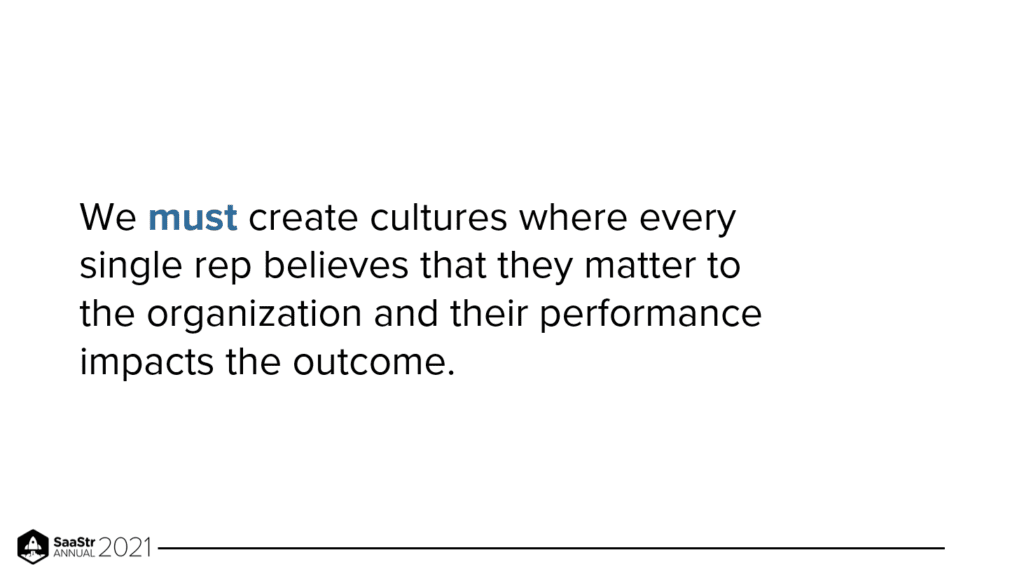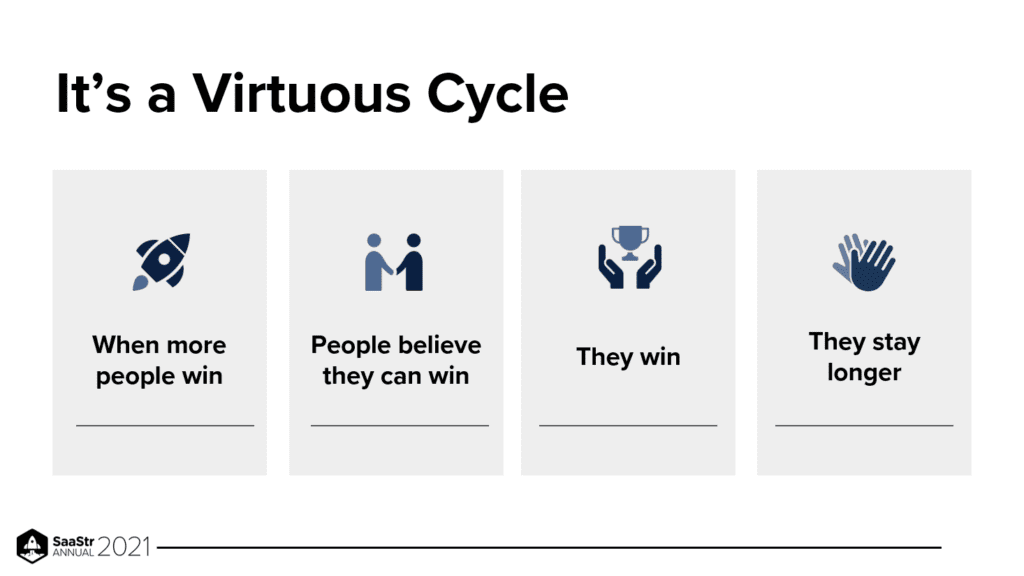Driving peak sales performance is a mission most SaaS companies strive to accomplish. Yet, sales team targets are often set extremely high, with management expecting their teams to miss. This might bring success for the company, but it leads to negative experiences for the sales rep, and your teams may ultimately fail to perform to their fullest potential.
Hootsuite CRO Melissa Murray Bailey shares secrets to running a successful SaaS sales team and reducing employee turnover.
The Dog-Eat-Dog Status Quo
Sales reps in many organizations operate in a high-stakes, winner-take-all culture. There are the top-performers, who get rewarded, and everyone else on the bottom tier. The non-top performing reps are constantly reprimanded about their quotas, which creates a polarizing environment. As Bailey points out, “We have a feast and famine culture in most sales organizations. What is this leading to? This is leading to 60% of sales leaders anticipating that their teams won’t be able to hit their quota.”
Want more? Enter your email below for the latest SaaStr updates
And the sales leaders are right –– often the C-suite sets sales targets far higher than they expect their sales team can possibly hit. The reasoning behind this tends to be that reps will try even harder to hit a high quota, and even if roughly half of them fail, the company will still benefit. Yet this type of thinking can actually separate the success of the sales team from the success of the company, as Bailey points out, “We have this vast gap between the company winning and the sales reps suffering.” Even as the company celebrates growth, the sales reps are still grappling with impossibly high quotas. Essentially, leadership is betting against their sales teams. How can SaaS leaders move past this type of mentality while still promoting high-performance sales teams?

Shift the Paradigm: Created a Predictable SaaS Sales Machine
To begin, Bailey suggests we shift our way of thinking –– what if we expect our reps to hit their quotas, and run the organization that way? This shift means setting achievable targets for our reps and aligning the sales team’s success with company success.
When you make this change of approach, you create a more predictable sales machine, which is critical for SaaS growth. Here are some strategies that help you achieve optimal sales performance:
- Land and Expand. Of course, every sales leader wants to drive expansion revenue from their existing customer base. The problem is, often, the priority and attention go to the top-tier deals alone. Bailey recommends that you shouldn’t hang too much hope on a single client but rather focus expansion efforts on a large number of smaller deals, so a single client’s cancellation or downgrade won’t devastate the organization. This also demands more expansion efforts from your entire sales team, not just the enterprise reps.
- Pacing. Create a system with a fast sales pace. Sometimes, slower movement is due to reps waiting on MQLs, but Bailey recommends diving first into the quantity to find the quality.
- Metrics. Your team needs to track performance and monitor pace. But don’t get in the weeds with superfluous information –– measure what matters. Remember, your metrics should be leading indicators, not lagging indicators.
- Playbook: A playbook is essential for creating a predictable and repeatable sales process. If leadership establishes a guide for the sales team to pinpoint what works, the reps are far more likely to succeed and hit quota.
A Virtuous Cycle
When your people win, so do you. You don’t want to constantly lose your hires because of negative experiences, so paying attention to your people metrics is essential for your success as an organization. When more people win, they believe they can win, which leads to actual wins, and they stay with your company for a longer amount of time.
Remember, leaders must create a culture where every sales rep believes they matter to the organization and their performance impacts the outcome.
Final Takeaways
- Create a formula that drives success.
- Measure the right metrics that act as leading indicators.
- Set up fair comp plans for your reps.
- Change the expectations of your leadership.
- G.I.A.T. (Give it a try!)


